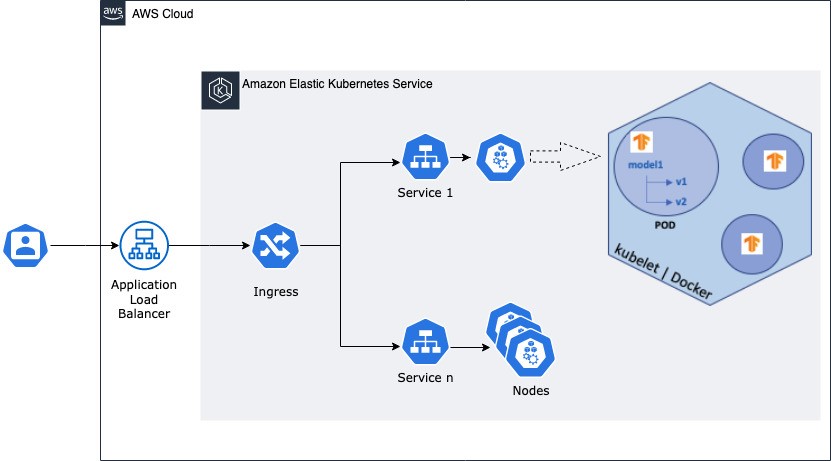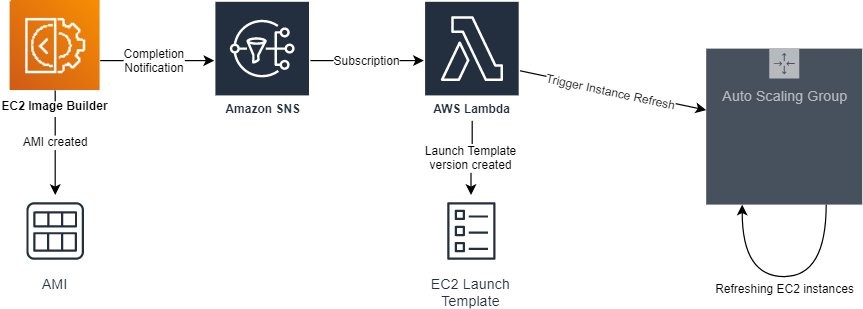AWS Compute Blog
Tag: Amazon EC2 Auto Scaling
Introducing Native Support for Predictive Scaling with Amazon EC2 Auto Scaling
This post is written by Scott Horsfield, Principal Solutions Architect, EC2 Scalability and Ankur Sethi, Sr. Product Manager, EC2 Amazon EC2 Auto Scaling allows customers to realize the elasticity benefits of AWS by automatically launching and shutting down instances to match application demand. Today, we are excited to tell you about predictive scaling. It is a […]
Scaling your applications faster with EC2 Auto Scaling Warm Pools
This post is contributed by Scott Horsfield, Principal Solutions Architect for EC2 Scalability, Surabhi Agarwal, Senior Product Manager for EC2 Auto Scaling, and Chad Schmutzer, Principal Developer Advocate for Amazon EC2. Customers have been using EC2 Auto Scaling to architect sophisticated, scalable, and robust applications on the AWS Cloud for over a decade. Launched in […]
Supporting AWS Graviton2 and x86 instance types in the same Auto Scaling group
This post is written by Tyler Lynch, Sr. Solutions Architect – EdTech, and Praneeth Tekula, Technical Account Manager. As customers seek performance improvements and to cost optimize their workloads, they are evaluating and adopting AWS Graviton2 based instances. This post provides instructions on how to configure your Amazon EC2 Auto Scaling group (ASG) to use […]
Introducing Spot Blueprints, a template generator for frameworks like Kubernetes and Apache Spark
This post is authored by Deepthi Chelupati, Senior Product Manager for Amazon EC2 Spot Instances, and Chad Schmutzer, Principal Developer Advocate for Amazon EC2 Customers have been using EC2 Spot Instances to save money and scale workloads to new levels for over a decade. Launched in late 2009, Spot Instances are spare Amazon EC2 compute […]
Proactively manage the Spot Instance lifecycle using the new Capacity Rebalancing feature for EC2 Auto Scaling
By Deepthi Chelupati and Chad Schmutzer AWS now offers Capacity Rebalancing for Amazon EC2 Auto Scaling, a new feature for proactively managing the Amazon EC2 Spot Instance lifecycle in an Auto Scaling group. Capacity Rebalancing complements the capacity optimized allocation strategy (designed to help find the most optimal spare capacity) and the mixed instances policy […]
TensorFlow Serving on Kubernetes with Amazon EC2 Spot Instances
This post is contributed by Kinnar Sen – Sr. Specialist Solutions Architect, EC2 Spot TensorFlow (TF) is a popular choice for machine learning research and application development. It’s a machine learning (ML) platform, which is used to build (train) and deploy (serve) machine learning models. TF Serving is a part of TF framework and is […]
Best practices for handling EC2 Spot Instance interruptions
This post is contributed by Scott Horsfield – Sr. Specialist Solutions Architect, EC2 Spot Amazon EC2 Spot Instances are spare compute capacity in the AWS Cloud available to you at steep discounts compared to On-Demand Instance prices. The only difference between an On-Demand Instance and a Spot Instance is that a Spot Instance can be […]
Introducing Instance Refresh for EC2 Auto Scaling
This post is contributed to by: Ran Sheinberg – Principal EC2 Spot SA, and Isaac Vallhonrat – Sr. EC2 Spot Specialist SA Today, we are launching Instance Refresh. This is a new feature in EC2 Auto Scaling that enables automatic deployments of instances in Auto Scaling Groups (ASGs), in order to release new application versions or make […]
Running Cost-effective queue workers with Amazon SQS and Amazon EC2 Spot Instances
This post is contributed by Ran Sheinberg | Sr. Solutions Architect, EC2 Spot & Chad Schmutzer | Principal Developer Advocate, EC2 Spot | Twitter: @schmutze Introduction Amazon Simple Queue Service (SQS) is used by customers to run decoupled workloads in the AWS Cloud as a best practice, in order to increase their applications’ resilience. You […]
Introducing the capacity-optimized allocation strategy for Amazon EC2 Spot Instances
AWS announces the new capacity-optimized allocation strategy for Amazon EC2 Auto Scaling and EC2 Fleet. This new strategy automatically makes the most efficient use of spare capacity while still taking advantage of the steep discounts offered by Spot Instances. It’s a new way for you to gain easy access to extra EC2 compute capacity in […]





